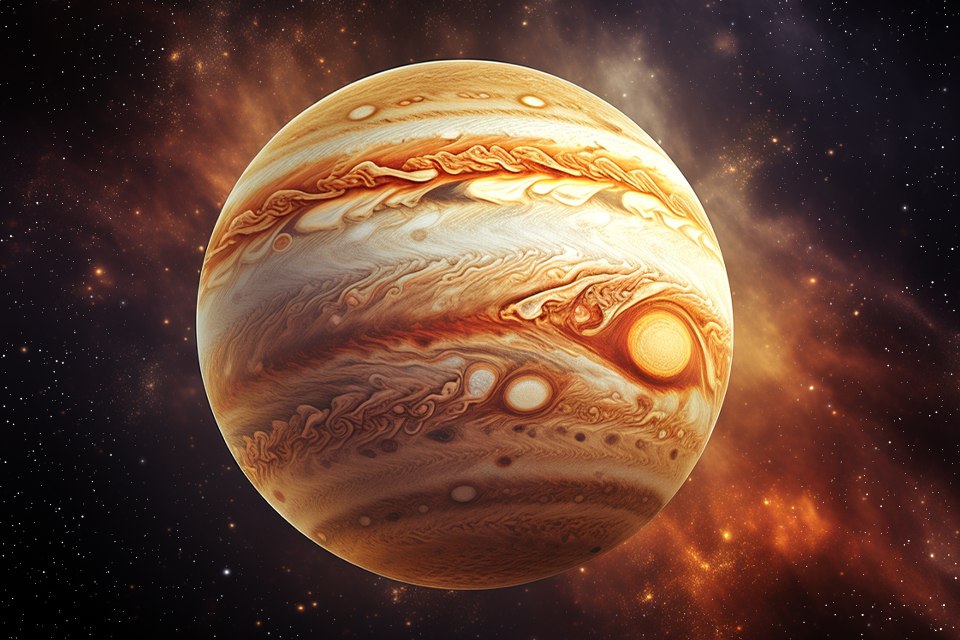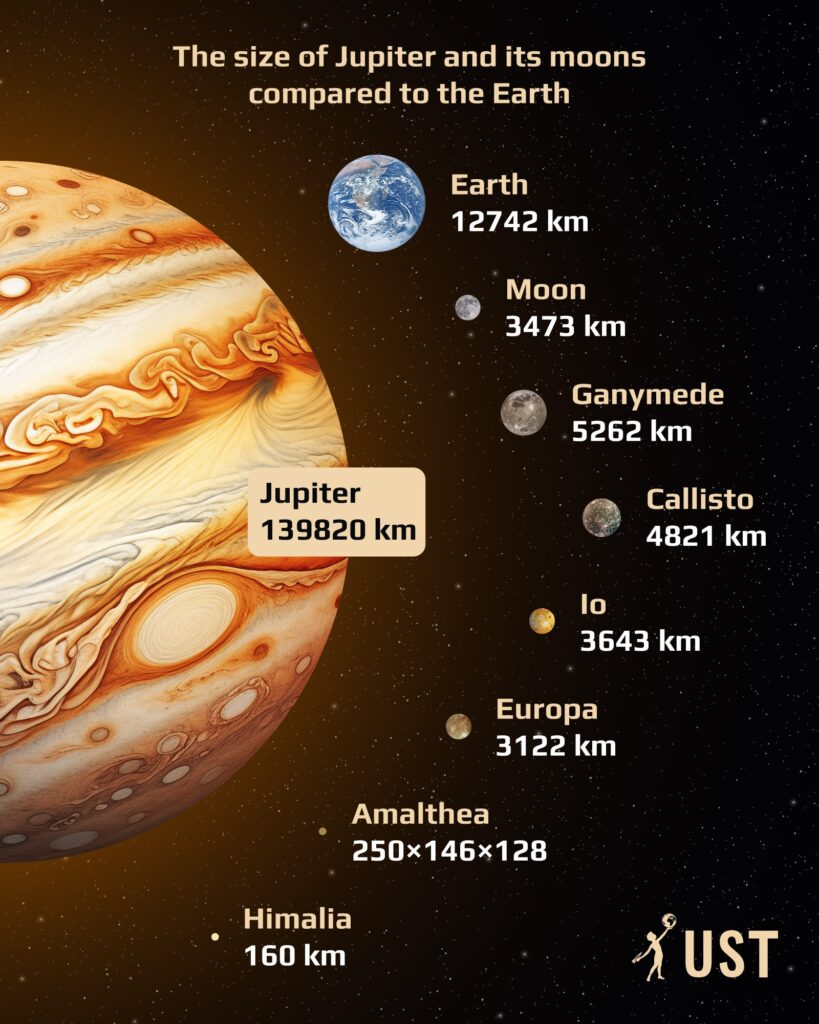On October 3, the Jupiter opposition will take place. The Earth will be almost exactly on the same straight line between the Sun and this giant planet. At the same time, the distance to it will be minimal. This will not affect the Earth in any way, but it will give us an opportunity to learn something interesting about the gas giant, named after the ancient Roman deity.

Everyone knows that Jupiter is the largest planet in the Solar System. But few people imagine how much. This gas giant has an average diameter of 139820 km. This is 11 times the diameter of the Earth.
A lot, but not impressive. However, the difference in volumes will be much larger. 1,321 planets like Earth could fit inside Jupiter. However, they would have to be deformed so that they densely filled the entire space inside it.
2. What are the bands visible on Jupiter?
If you look at Jupiter through binoculars, you can only see a tiny light disk. But if you take a more powerful telescope with a magnification of 40–50 times, it is not difficult to notice that this disk is crossed by dark bands parallel to the equator of the planet. There are belts of clouds lined up in this direction.
The reason for this strange behavior of the atmosphere is the extremely high speed of Jupiter’s rotation around its axis. Its equatorial regions rotate in just 10 hours. In addition, there are powerful convective flows in the Jovian atmosphere coming from the hotter center of the planet.
As a result, the wind speed on Jupiter can reach 600 km/h. They form bands of clouds that stretch along the equator.
3. Does Jupiter emit energy?
Jupiter is sometimes called an “unlucky star”. It means that it is a large hydrogen ball in which, under certain conditions, a thermonuclear reaction of converting deuterium (a heavy isotope of hydrogen) into helium could begin. Although for this, it would have to become as much as 13 times more massive, and even so, it would not be a real luminary but only a brown dwarf.
At the same time, Jupiter radiates energy. In the infrared range, the difference between what it receives from the Sun and what it gives to outer space is 60%. This is due to the process of gravitational compression, due to which the diameter of the planet decreases by 2 cm every year. It causes heating of the Jovian interior.
In addition, Jupiter is the most powerful radio emitter in our planetary system after the Sun. But this is already due to its powerful magnetic field and the flows of matter inside the planet that generate it.
4. How many moons does Jupiter have?
Jupiter has an incredible number of moons — 95. However, this is still much less than Saturn, which has 141 of them. The largest planet has so many moons that a significant part of them has only conventional designations, but not names.
And this is not surprising if you look at what they are. Only Ganymede, Callisto, Io and Europa have a diameter of more than 1,000 km and can well be called dwarf planets. Another two – Amalthea and Himalia – have dimensions of more than 100 km (while their shapes are far from spherical). The rest of the moons are much smaller; most of them “do not reach” up to 10 km.

5. Does Jupiter have rings?
Saturn is usually called a “planet with rings”. But such structures surround all four giant planets in the Solar System. However, they are not so impressive for Uranus and Neptune, and it is difficult to notice them at all on Jupiter.
Jupiter’s rings are made up of tiny dust particles dislodged from the surface of the planet’s inner moons by meteor bombardments. Therefore, they are practically not visible in the visible range. Another thing is infrared images, which are taken, for example, by the James Webb Telescope.
Follow us on Twitter to get the most interesting space news in time
https://twitter.com/ust_magazine
